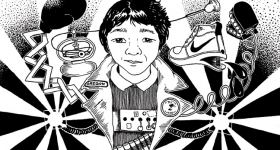Say cheese, America!
On April 1, 2010, the United States posed for a new profile pic by asking its residents nationwide to participate in the 2010 Census. Each household, just a single pixel in a larger image, took an accurate head count, and shared basic information regarding their age, birth date, and race. Now, as the snapshot comes into more detailed focus, with federal data releases continuing through the summer, it is important for the AAPI population and the nation as a whole to take note of just how the country is changing demographically.
For starters, the nation’s Asian population became the fastest growing racial group over the past decade, experiencing a 43 percent increase from 2000 to 2010. We’ve grown from 10.2 million in 2000 to 14.7 million in 2010, a growth from 4 percent to just under 5 percent within the last decade.
Extracting meaningful nuggets of knowledge from the vast sea of spreadsheets available to the public on census.gov is not a task for the faint of heart. But have no fear -- Hyphen is teaming up with the White House Initiative on Asian Americans and Pacific Islanders, to present a series of census-related blog stories. Each will focus on a different sector of life such as the economy, education, or health, to culminate in a feature spread in Hyphen’s next print issue. So take heart, we’re here to breathe a little life into the numbers.
It’s easy to overhear census statistics without thinking about their deeper significance, or the underlying societal complexities. Though it may feel abstract and unrelated to your life, census information is a crucial determinant in how political power and federal funding are distributed (read: VERY relevant to your life).
The 2010 Census shows us signs of tremendous success for the AAPI community, but also highlights huge disparities. With the increase in the Asian population, how will media and representation change to appropriately reflect the changing face of the United States? Statistics indicate AAPIs as an economically successful and highly educated population, but conversely overshadow the staggering high school drop-out rate among Southeast Asian Americans, or the health problem of chronic Hepatitis B and cervical cancer specifically in the AAPI population.
As census data continues to roll out, Hyphen’s approach will be to celebrate statistics of progress and improvement, but also shed light on the masked and nuanced complexities within smaller more neglected populations. Also, we will introduce groups, organizations, and individuals who are working with the changing demographics, and using the data to continue fighting for underserved communities.
We're in an age where Facebook could arguably paint a more accurate picture of the American population, and the world. However, the US Census is one of America's oldest traditions (the first ever conducted under Washington in 1790), and remains vital to providing benchmarks of growth and change. It’s up to us to engage with its results and continue to learn about who we are as a country and where we are headed, as our page of American history hits refresh.
***
The 2010 Census series will run throughout the fall. Look out for the next post on August 29.










Comments